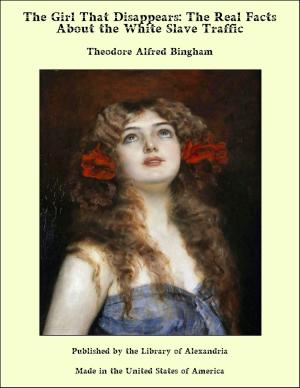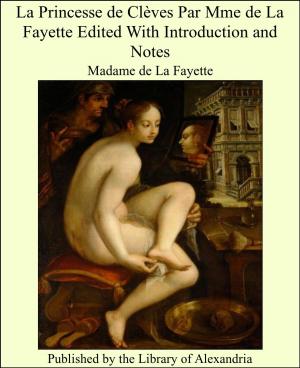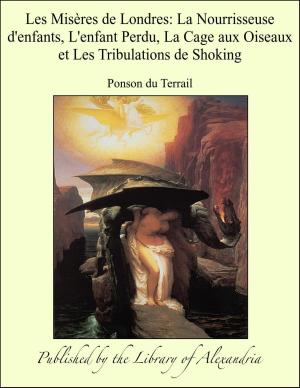Lives of the Most Eminent Painters Sculptors and Architects (Complete)
Nonfiction, Religion & Spirituality, New Age, History, Fiction & Literature| Author: | Giorgio Vasari | ISBN: | 9781465531582 |
| Publisher: | Library of Alexandria | Publication: | July 29, 2009 |
| Imprint: | Library of Alexandria | Language: | English |
| Author: | Giorgio Vasari |
| ISBN: | 9781465531582 |
| Publisher: | Library of Alexandria |
| Publication: | July 29, 2009 |
| Imprint: | Library of Alexandria |
| Language: | English |
Vasari introduces himself sufficiently in his own prefaces and introduction; a translator need concern himself only with the system by which the Italian text can best be rendered in English. The style of that text is sometimes laboured and pompous; it is often ungrammatical. But the narrative is generally lively, full of neat phrases, and abounding in quaint expressions—many of them still recognizable in the modern Florentine vernacular—while, in such Lives as those of Giotto, Leonardo da Vinci, and Michelagnolo, Vasari shows how well he can rise to a fine subject. His criticism is generally sound, solid, and direct; and he employs few technical terms, except in connection with architecture, where we find passages full of technicalities, often so loosely used that it is difficult to be sure of their exact meaning. In such cases I have invariably adopted the rendering which seemed most in accordance with Vasari's actual words, so far as these could be explained by professional advice and local knowledge; and I have included brief notes where they appeared to be indispensable. In Mrs. Foster's familiar English paraphrase—for a paraphrase it is rather than a translation—all Vasari's liveliness evaporates, even where his meaning is not blurred or misunderstood. Perhaps I have gone too far towards the Other extreme in relying upon the Anglo-Saxon side of the English language rather than upon the Latin, and in taking no liberties whatever with the text of 1568. My intention, indeed, has been to render my original word for word, and to err, if at all, in favour of literalness. The very structure of Vasari's sentences has usually been retained, though some freedom was necessary in the matter of the punctuation, which is generally bewildering. As Mr. Horne's only too rare translation of the Life of Leonardo da Vinci has proved, it is by some such method that we can best keep Vasari's sense and Vasari's spirit—the one as important to the student of Italian art as is the Other to the general reader. Such an attempt, however, places an English translator of the first volume at a conspicuous disadvantage. Throughout the earlier Lives Vasari seems to be feeling his way. He is not sure of himself, and his style is often awkward. The more faithful the attempted rendering, the more plainly must that awkwardness be reproduced. Vasari's Introduction on Technique has not been included, because it has no immediate connection with the Lives. In any case, there already exists an adequate translation by Miss Maclehose. All Vasari's Other prefaces and introductions are given in the order in which they are found in the edition of 1568
Vasari introduces himself sufficiently in his own prefaces and introduction; a translator need concern himself only with the system by which the Italian text can best be rendered in English. The style of that text is sometimes laboured and pompous; it is often ungrammatical. But the narrative is generally lively, full of neat phrases, and abounding in quaint expressions—many of them still recognizable in the modern Florentine vernacular—while, in such Lives as those of Giotto, Leonardo da Vinci, and Michelagnolo, Vasari shows how well he can rise to a fine subject. His criticism is generally sound, solid, and direct; and he employs few technical terms, except in connection with architecture, where we find passages full of technicalities, often so loosely used that it is difficult to be sure of their exact meaning. In such cases I have invariably adopted the rendering which seemed most in accordance with Vasari's actual words, so far as these could be explained by professional advice and local knowledge; and I have included brief notes where they appeared to be indispensable. In Mrs. Foster's familiar English paraphrase—for a paraphrase it is rather than a translation—all Vasari's liveliness evaporates, even where his meaning is not blurred or misunderstood. Perhaps I have gone too far towards the Other extreme in relying upon the Anglo-Saxon side of the English language rather than upon the Latin, and in taking no liberties whatever with the text of 1568. My intention, indeed, has been to render my original word for word, and to err, if at all, in favour of literalness. The very structure of Vasari's sentences has usually been retained, though some freedom was necessary in the matter of the punctuation, which is generally bewildering. As Mr. Horne's only too rare translation of the Life of Leonardo da Vinci has proved, it is by some such method that we can best keep Vasari's sense and Vasari's spirit—the one as important to the student of Italian art as is the Other to the general reader. Such an attempt, however, places an English translator of the first volume at a conspicuous disadvantage. Throughout the earlier Lives Vasari seems to be feeling his way. He is not sure of himself, and his style is often awkward. The more faithful the attempted rendering, the more plainly must that awkwardness be reproduced. Vasari's Introduction on Technique has not been included, because it has no immediate connection with the Lives. In any case, there already exists an adequate translation by Miss Maclehose. All Vasari's Other prefaces and introductions are given in the order in which they are found in the edition of 1568















